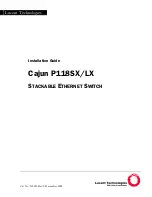
English
_45
●
Address type : Select an address type of the camera.
■
The supported address type may differ depending on the type of the connected product.
– IPv4/IPv6 : Used to provide the IP address of the camera manually.
– Wisenet DDNS : This is available only if the camera is registered with the Wisenet DDNS(ddns.
hanwhasecurity.com) server. Provide the registered domain for DDNS ID.
example)
http ://ddns.hanwha-security.com/snb5000 ; provide "snb5000" for Wisenet DDNS
– URL : Used for URL address input.
■
The DDNS specs supported by each camera can be checked in the user manual of the corresponding camera.
●
IP address : Provide the IP address of the camera.
●
Port : Provide the device port of the camera.
■
Depending on the camera type, some device ports will not be supported.
●
HTTP : Provide the HTTP port of the camera.
●
ID : Provide the ID of the camera that you want to register.
●
Password : Enter the password of the camera to be registered.
●
Details : You can set the streaming mode.
5.
Select <
onVif
> or <
rtSp
> for the protocol and enter your input for each field appears.
●
ONVIF : After selecting an IP type, set IP address, ONVIF port, ID, password, and details.
– IP type : Select the IP type of the camera.
– IP address : Enter the camera's IP address.
– ONVIF port : Enter the port number when the address type is IPv4 or IPv6.
– Channel : Enter the channel to register the camera.
– ID : Enter the camera ID.
– Password : Enter the camera password.
– Details : You can set the usage of TLS, authentication mode, and streaming mode.
●
RTSP : Set URL, ID, password, and details.
– URL : Enter your RTSP access address. For more information, see your camera user manual.
– ID : Enter the camera ID.
– Password : Enter the camera password.
– Details : You can set the streaming mode.
■
If ONVIF or RTSP protocol is selected, you can set the streaming mode in the Details section.
–
TCP : The connection to network camera operates in the RTP over TCP mode.
–
UDP : The connection to network camera operates in the RTP over UDP mode.
–
HTTP : The connection to network camera operates in the RTP over TCP (HTTP) mode.
–
HTTPS : The connection to network camera operates in the RTP over TCP (HTTPS) mode.
if you want to check the error details of camera registration
If you failed to register a camera, the reason for the failure will be displayed.
●
connection failed due to unknown error.
: This message appears if the camera has failed to be registered
due to unknown connection status.
●
Due to the camera account locking, access has failed.
: When you enter a wrong ID/password 5 times to
login to the camera account, this message is displayed.
Try to log in again after 30 seconds. If the same message appears, you may need to check whether someone
has tried to access your camera account from the outside.
●
connected successfully.
: This message appears if the camera is connected successfully.
●
incorrect model information. provide the correct model information.
: This message appears if the model
information provided for registering the camera is incorrect.
●
authentication has failed.
: This message appears if the ID or password provided for registering the camera is
incorrect.
●
connection has failed due to excessive concurrent users.
: This message appears if the concurrent user
count exceeds the upper limit.
●
connection has failed due to incorrect http port information.
: This message appears if the HTTP port
number of the camera is invalid.
●
connection has failed. unknown connection status.
: This message appears if the camera has failed to be
connected due to a unknown error.
●
user model modification
: When registering a new camera, it is named according to the device's default if
user set the model to <
Wisenet camera
>. In case if automatic registration fails, user can change the model
name of camera to be registered.
to edit camera profile
To change profile, refer to the “
Setup
>
Setting the camera
>
Setting the profiles
" page in the Table of
Contents.
■
In case of Recorder, if you set 3 different profiles for live, recording and network profile, one camera will produce video streams accordingly,
having different stream formats. Especially, note that the live profile may vary depending on the used screen split mode.
■
For cameras, if applied with one profile only, the produced frame rate is fixed as the profile specifies; if applied with multiple profiles,
produced video stream's frame rate is not guaranteed. For example, if applied with 2 profiles of 30fps, the camera may transmit streams at
20fps.
Delete network camera
1.
Click <
Delete
> in the <
channel setup
> field.
2.
When the delete window appears, select the camera channel to delete.
■
Click <
All channels
> to select cameras for all channels.
3.
Click <
oK
> to delete the camera of the selected channel.
• S
etup
Содержание Wisenet PRN-6400DB4
Страница 1: ...NETWORKVIDEO RECORDER User Manual Wisenet NVR...
Страница 125: ......















































